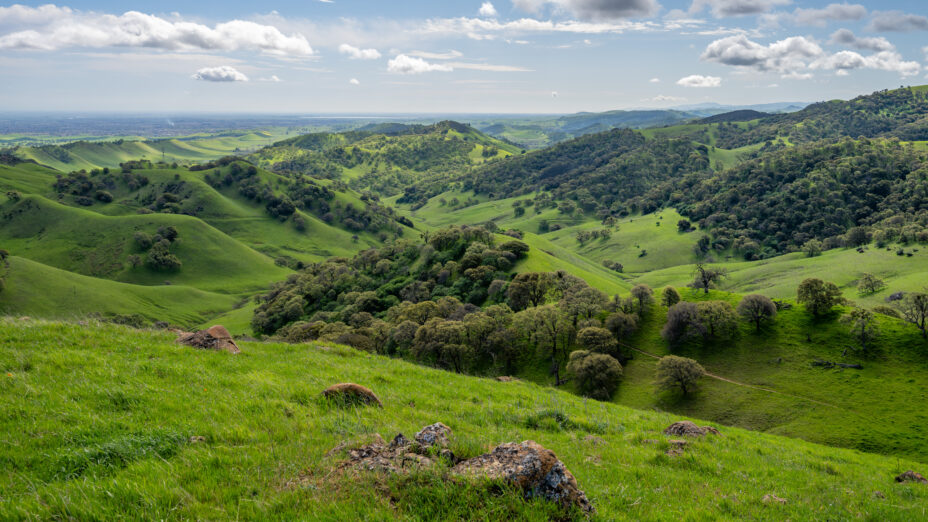
Going against the Flow to Challenge Bad Projects and Protect Open Space
Save Mount Diablo has defended the open space and wildlife of Contra Costa County since our founding in 1971.
Our history of trying to engage with the City of Pittsburg for the benefit of residents and nature spans decades. With the Seeno developer family holding great sway in city politics, and city leadership often pro-development, this has not always been easy.
In this new year of 2025, we wanted to provide a brief history of our work in Pittsburg over the last decade or so.
Through tough times and setbacks, positive results can be won as long as we stay in the fight. As we have repeatedly shown, Save Mount Diablo is in it for the long haul.
Buying Land around Pittsburg to Protect Open Space
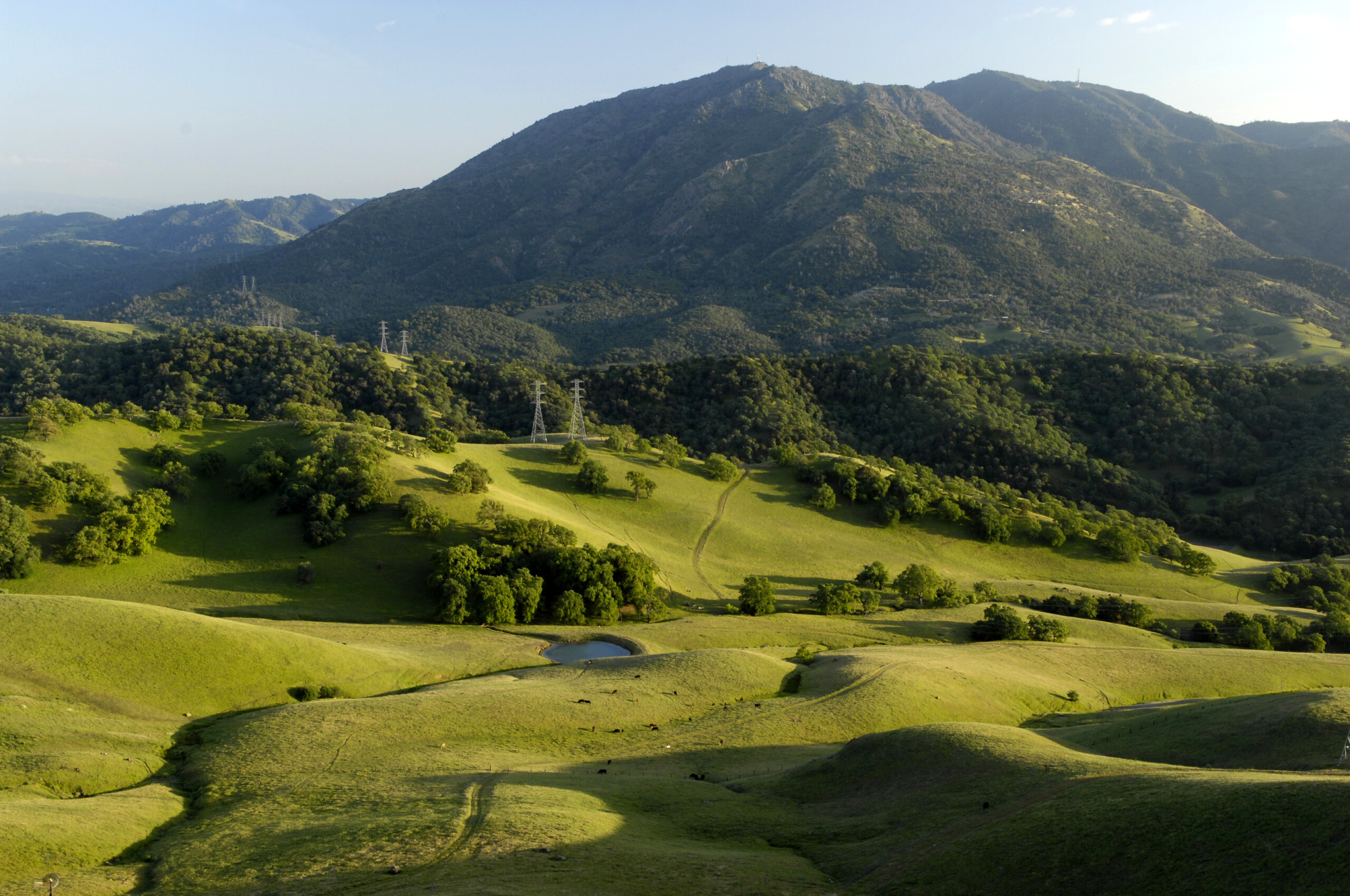
Irish Canyon from Kreiger Peak. Irish Canyon was purchased by Save Mount Diablo in 2010 as part of our work to secure a wildlife habitat and recreational corridor between Black Diamond Mines Regional Preserve and Mount Diablo State Park. Photo: Scott Hein
Pittsburg is fortunate in that its location offers many opportunities for recreation and connection with nature.
It’s right next to the confluence of the Sacramento and San Joaquin Rivers to the north, and the foothills of Mount Diablo, largely protected by Black Diamond Mines Regional Preserve to the south.
So, residents have almost every possible way to get outside and have fun nearby.
For decades we have worked with East Bay Regional Park District and the East Contra Costa Habitat Conservancy to dramatically expand Black Diamond Mines Regional Preserve.
Although Black Diamond Mines appears to include about 5,000 acres on current public maps, when adjacent regional park lands are included, the total protected area is in fact about 10,000 acres stretching south to Clayton and east to Antioch, Brentwood, and other regional and state parks.
More than 30,000 acres have been protected from Pittsburg southeast to the Los Vaqueros watershed, south across Irish Canyon to Mount Diablo, and west across Kirker Pass to the former Concord Naval Weapons Station.
In 2011, Save Mount Diablo purchased 145 acres of grassland and creek habitat along Kirker Pass Road by outbidding a potential developer. This land would become known as Thomas Home Ranch.
A habitat corridor goes from this area north to Suisun Bay, and it contains a critical recreational connection through a tunnel crossing Kirker Pass Road.
It’s also next to Pittsburg’s Urban Limit Line, meaning it helps serve as a “wall” of protected land that shields other unprotected lands behind it from potential urban expansion.
Our ability to act nimbly in purchasing land allowed us to protect Thomas Home Ranch from development, and transfer most of the property to the East Bay Regional Park District.
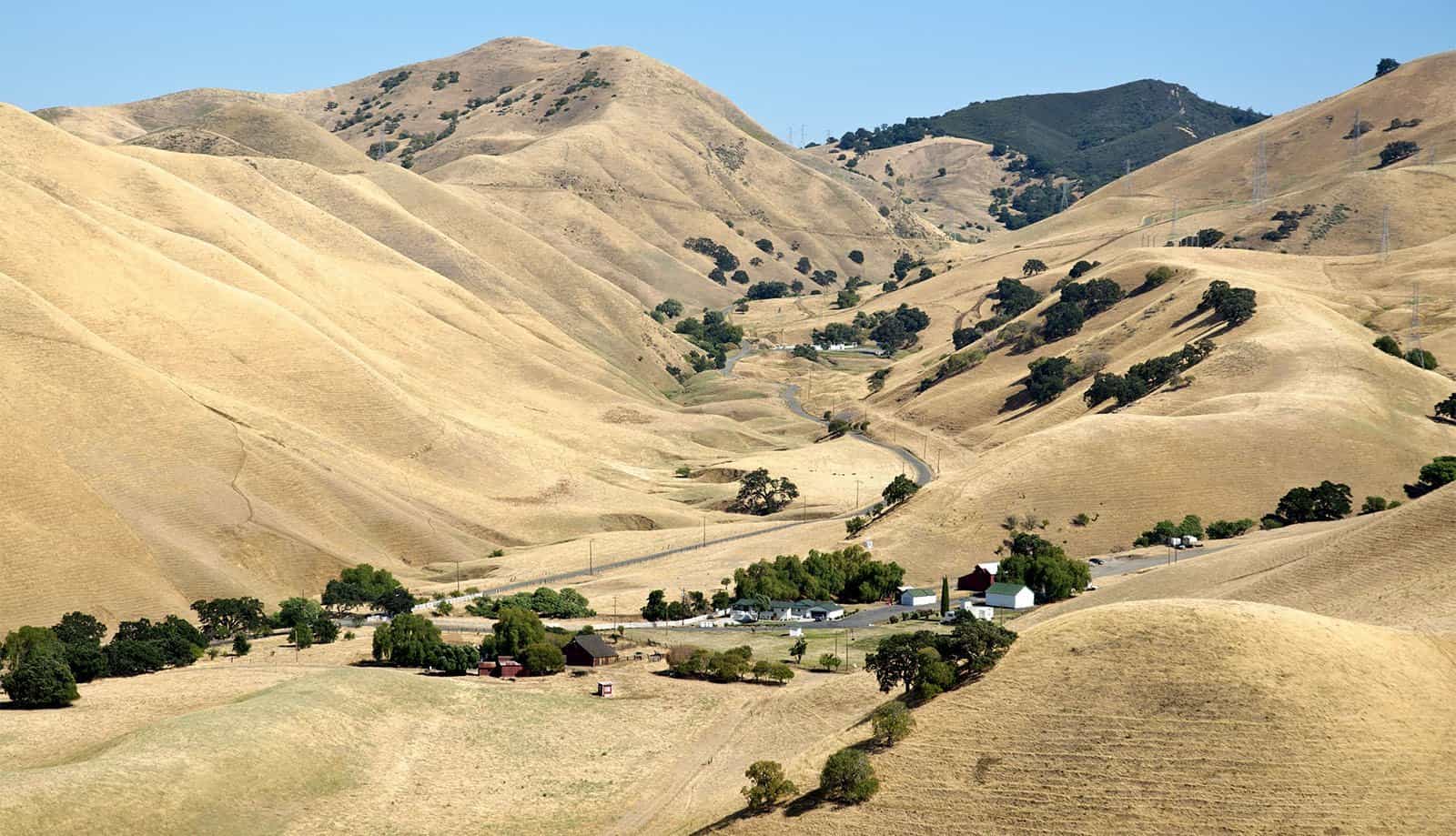
Thomas Home Ranch. Photo: Scott Hein
The park district is designed to hold large areas of land under protection for the long term.
Before we transferred ownership of the land, we removed 20,000 pounds of trash and other waste from the property and held on to about 10 acres to do more habitat restoration.
We continue to manage Thomas Home Ranch for the benefit of wildlife and native plants, and the East Bay Regional Park District continues to own it.
Land Use Work: Fighting Bad Development Projects
Our land use work in Pittsburg goes back more than 40 years. We’ve
- resisted developing more green space around Pittsburg’s current built footprint,
- fought annexations that would bring open space land around the city into it so it could be developed, and
- challenged road proposals that would make traffic worse and destroy beautiful habitat.
Early Years
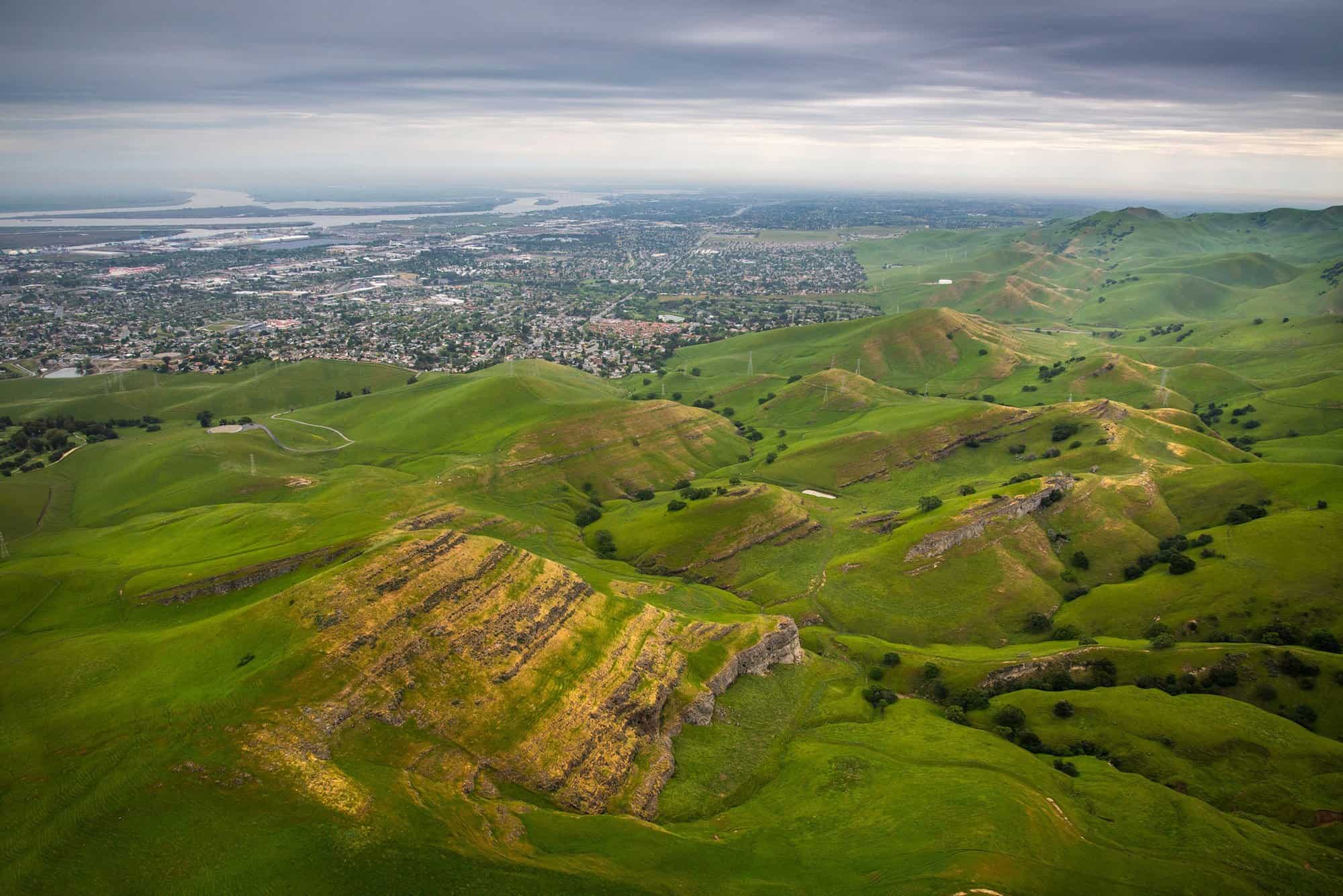
The foothills of Mount Diablo near Pittsburg, Kirker Pass, and Nortonville Canyon. Photo: Scott Hein
One of our early victories in the city happened in the mid-1990s.
After years of our work alerting city and county residents, Pittsburg’s leadership shelved plans to annex almost 3,000 acres of land to the southeast, rising from Kirker Pass Road up Nortonville Canyon.
Our victory in the Pittsburg Southeast Hills annexation project was a great step forward in protecting the beautiful hills and open spaces around Pittsburg.
Since then, conservation land acquisitions have stretched from Black Diamond Mines across Kirker Pass.
These land purchases have almost completed a corridor to the new Thurgood Marshall Regional Park at the former Concord Naval Weapons Station, in a Skyline to the Sea corridor.
In 2005, we lost our fight against Measure P, a measure that expanded Pittsburg’s Urban Limit Line (a line beyond which urban-style development cannot occur) by a few hundred votes. Measure P’s ULL expansion set the stage for years of other land use fights.
Battling Bad Projects One-by-One
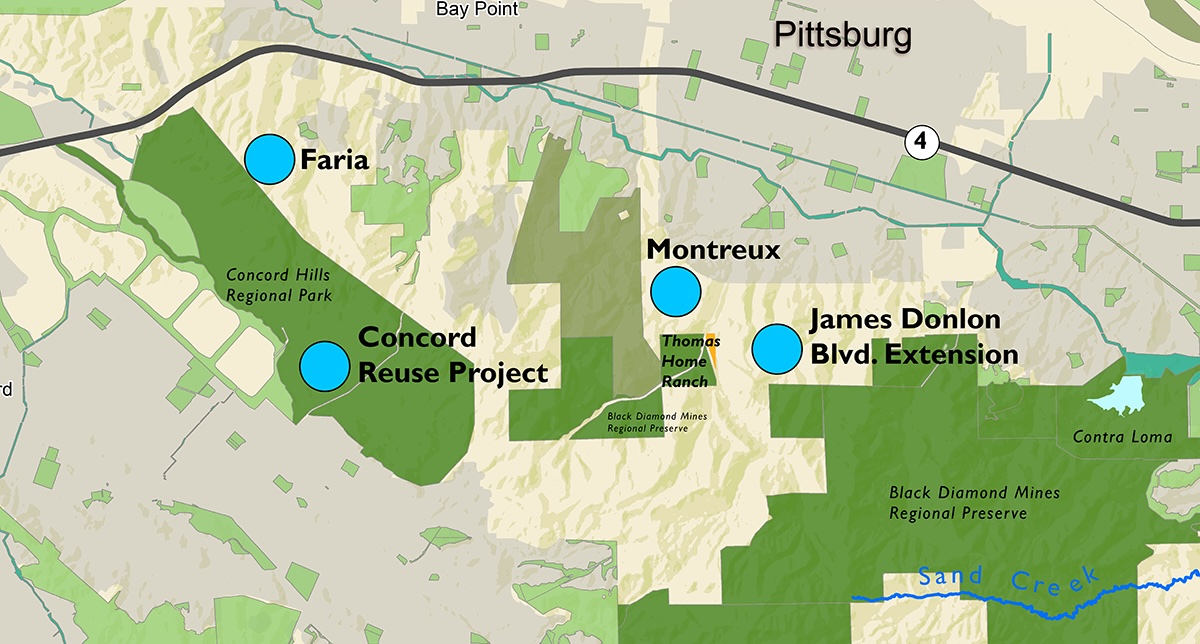
Map of Save Mount Diablo’s recent Pittsburg and Concord land use advocacy projects. Map by Roxana Lucero and Laura Kindsvater
With Measure P bringing more undeveloped land into Pittsburg’s Urban Limit Line, it was now easier for developers to propose development outside the city limits.
One project, the Montreux residential development, was proposed by a Seeno development company. It called for more than 300 houses to be built in a scenic valley on the west side of Kirker Pass Road, close to our Thomas Home Ranch land conservation purchase.
We fought Montreux for years, commenting and pointing out the damage to scenic habitat features like rock outcrops, the intensive grading of hills, and the damage to Pittsburg’s scenic ridgelines that the project would cause.
Though we were successful in forcing Seeno and Pittsburg to do more environmental review of the project, it was eventually approved in 2016.

View of Pittsburg’s hills from above including part of the proposed Faria development site. Photo: Cooper Ogden
Similarly, we battled a much larger project to Pittsburg’s southwest for years, one that would lie on top of the scenic hills separating Pittsburg from Concord and central Contra Costa County.
The 1,500-house Faria project called for the annexation of more than 600 acres of hills. This project was also proposed by a Seeno company and within the Urban Limit Line created by Measure P.
The Faria development would build 1,500 houses above and next to the new Thurgood Marshall Regional Park in Concord.
Faria actually broke the provisions of Measure P, because it disregarded development standards like reduced grading and not allowing dense development that would have reduced impacts on Pittsburg’s hills.
We wanted the houses brought downhill to avoid impacting views in central Contra Costa County and to avoid impacting the new regional park as much.
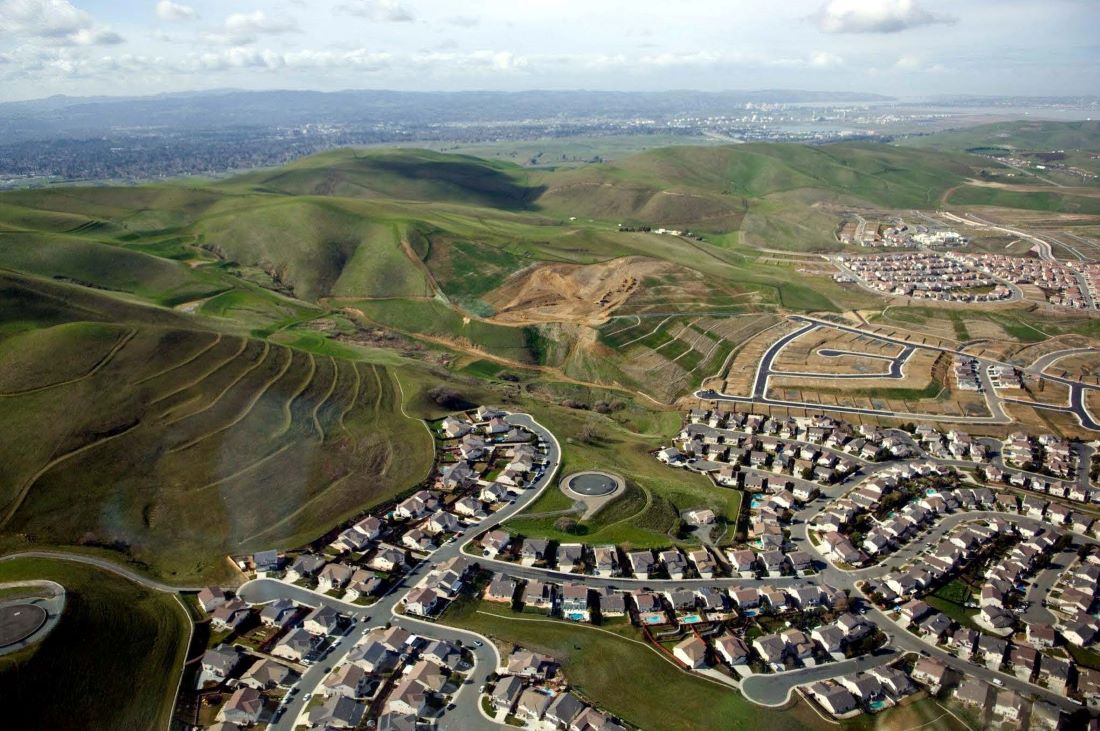
Sprawl development in Pittsburg’s hills. Photo by Scott Hein
We won two legal victories against the initial Pittsburg City Council approval of Faria in 2021 and won more environmental review of the project, which caused its initial approval to be reversed.
However, a new Pittsburg City Council again approved Faria in 2023. LAFCO, the Local Agency Formation Commission, later allowed “annexation” or addition of Faria to the Pittsburg city limits.
Contrary to what some may think, Save Mount Diablo does not resist all development. In fact, just next door to Faria is an example of a big project we fully support.
The new regional park that Faria will unfortunately impact is partly a result of our advocacy on the Concord Naval Weapons Station reuse project.
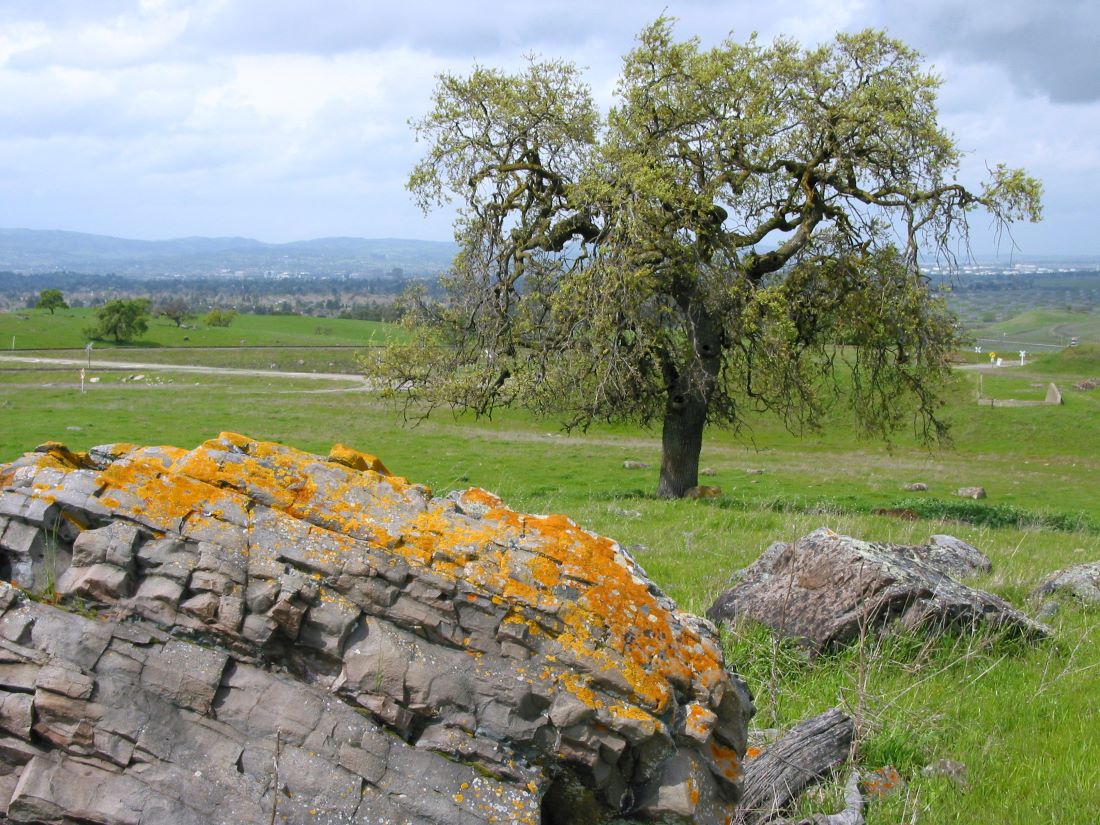
The former Concord Naval Weapons Station. Photo by Brian Holt
When the Navy closed this more than 5,000-acre site as a military base, many different groups envisioned many different uses for it. They proposed housing, business, open space, experimental test sites, and more.
As a result of our work and that of our allies, 69 percent of this area has been protected. It’s protected as a new regional park, neighborhood buffers, linear parks, and other kinds of green space.
These parks and open spaces will benefit the more than 12,000 new homes (of all different types) in this world-class, transit-oriented community.
This is the kind of development that can happen when groups like Save Mount Diablo and cities collaborate. Pittsburg and the Seenos repeatedly fail to learn the lessons of collaboration and smart growth.
Faria will damage habitat, scenic hills, and the new regional park; and make traffic worse in Pittsburg.
However, we can celebrate recent progress over a different bad project, progress that has been decades in the making.
James Donlon Boulevard Extension: A Bad Project from the 1970s
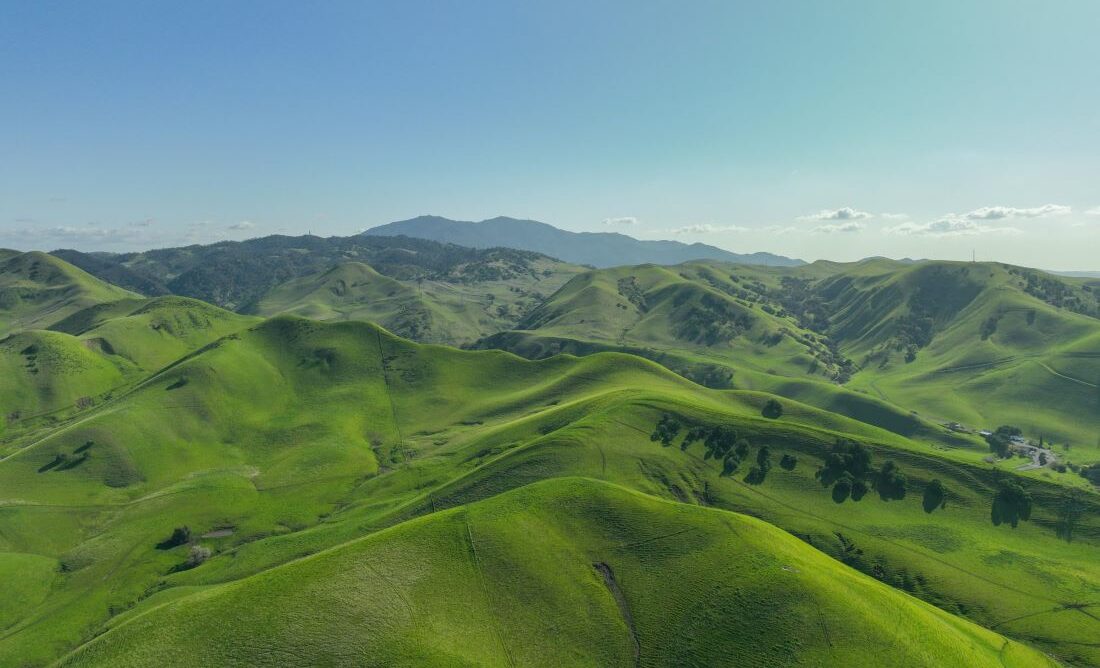
The hills that would have been negatively impacted by the James Donlon Blvd. extension. Photo: Cooper Ogden
The proposed James Donlon Boulevard extension would have built 1.71 miles of road south of Pittsburg. It would have connected Seeno’s Sky Ranch 2 housing project in the east near Somerville Road with Kirker Pass Road.
Its path would have cut through six steep creek canyons, required a huge amount of fill, and caused more than 2.1 million cubic yards of grading on landslide-prone hills.
It would have sliced the historic Wayne Thomas Ranch in two, and rendered the cattle business there untenable. It would also have destroyed the scenic backdrop of the hills south of Pittsburg and below Black Diamond Mines Regional Preserve.
This proposal had been on Pittsburg’s planning books since the 1970s. Our real work began in 2007, when the environmental review started.
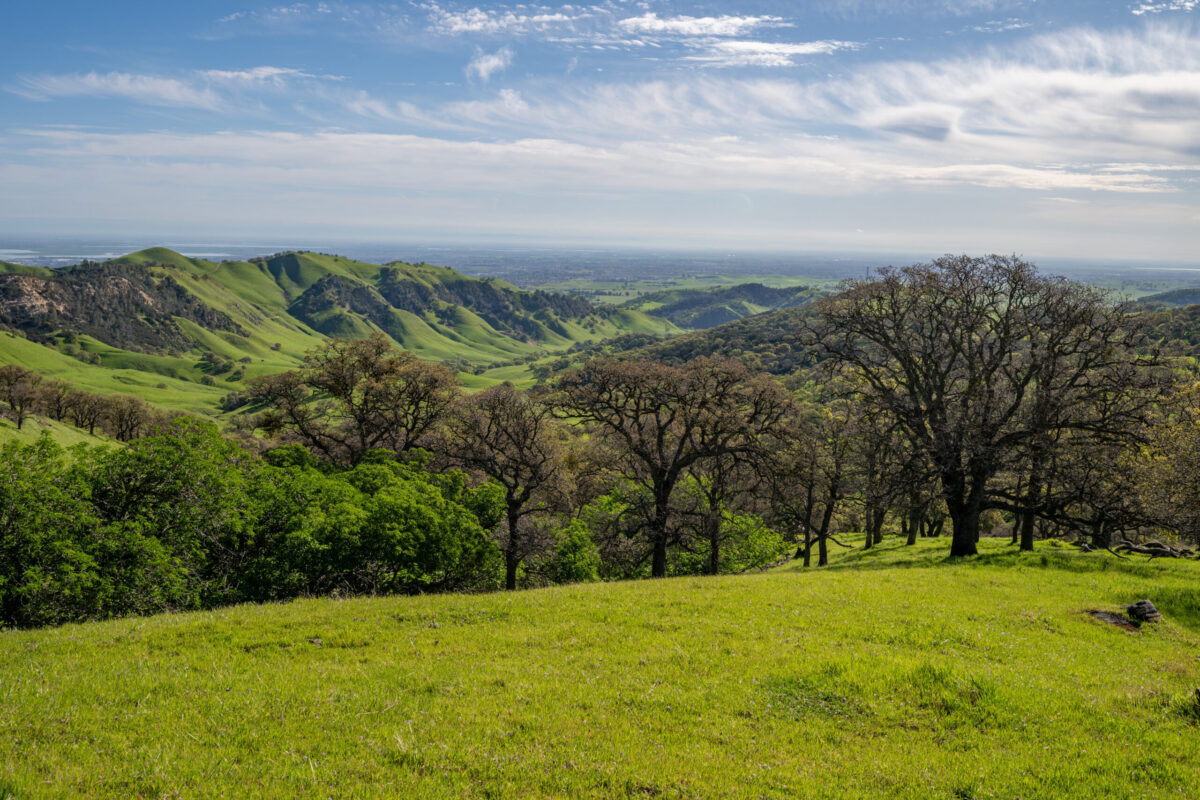
Mount Diablo’s foothills adjacent to Pittsburg that would have been negatively impacted if the James Donlon Boulevard extension had been built. Photo: Scott Hein
We hired a legal team to make substantive comments on the project, which made the city do more environmental review. That work made it clear that Pittsburg was badly underestimating how much the road would cost.
We also educated decision makers at other agencies that would have to issue permits if the James Donlon extension was ever going to happen.
One of these agencies was the Regional Water Quality Control Board, which required bridges instead of culverts for the six canyons the project would have crossed.
The bridges would have cost $200 to 300 million, far more than the City of Pittsburg’s repeated cost estimate of $50 to $60 million for the road.
The city approved the project in late 2014 but never filed the notice of determination to complete environmental review, which would have triggered an environmental lawsuit.
A combination of time, inflation affecting construction costs, and the Regional Water Quality Control Board’s requirement that creek crossings use bridges, meant that costs have skyrocketed.
The increased costs severely reduce the odds that the James Donlon extension will ever actually be built.
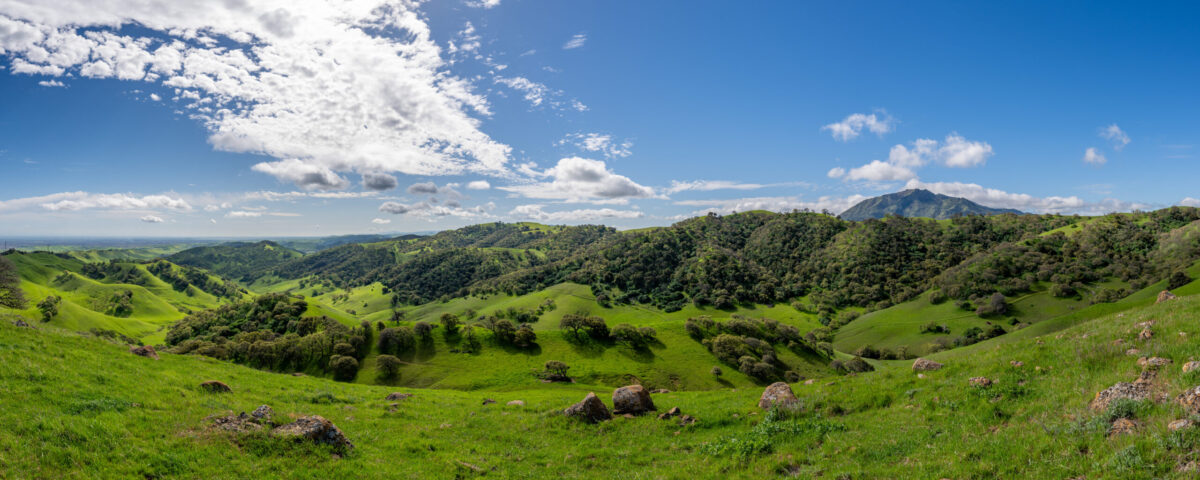
Scenic views that would have been destroyed if the James Donlon Boulevard extension had been built. Photo: Scott Hein
Pittsburg quietly let the project drop in priority for regional transportation planning and funding, and hasn’t done significant work on it for years. They’ve never completed the final step of environmental review.
Environmental documents are now more than 10 years out of date. We can hope that Pittsburg will let this dinosaur of a bad 1970s project finally die.
Save Mount Diablo will continue to engage in Pittsburg and throughout the Diablo Range to protect open space and wildlife habitat and work for a sustainable quality of life for its residents.

